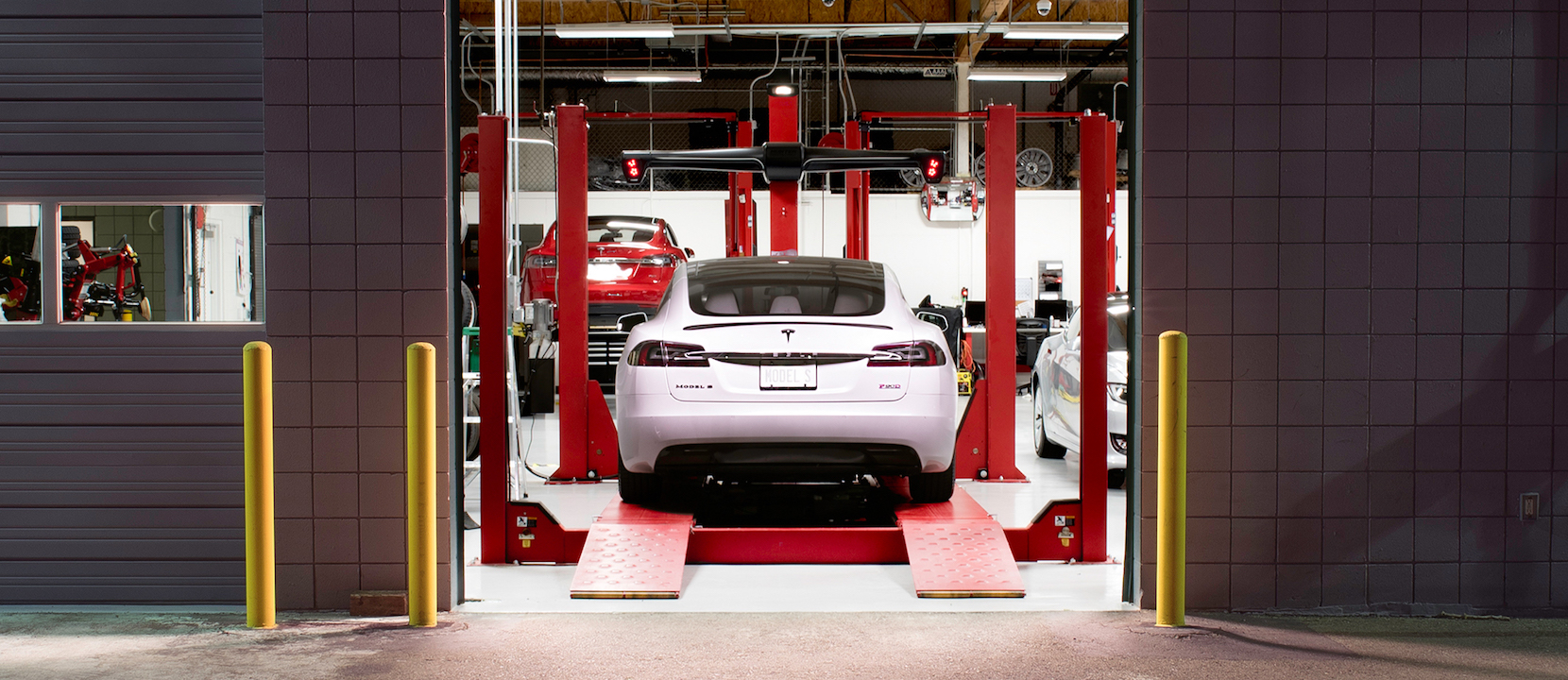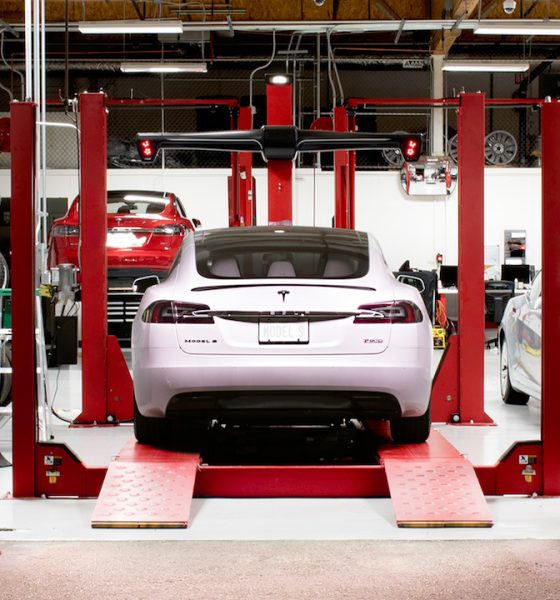

News
Elon Musk pledges to improve Tesla’s service location coverage within 3-6 months
In a recent announcement on Twitter, Elon Musk pledged to “fix” the existing gaps in the coverage of Tesla’s service locations. According to the CEO, Tesla would aim to expand the reach of its service centers to areas beyond big North American cities within the next 3-6 months. Musk also issued the same pledge to all countries that Tesla will be operating in by the end of next year.
Just reviewed Tesla’s service locations in North America & realized we have major gaps in geographic coverage! Sorry for this foolish oversight. Tesla will aim to cover all regions of NA (not just big cities) within 3 to 6 months.
— Elon Musk (@elonmusk) October 17, 2018
Musk’s announcement on Twitter comes at a time when Tesla seems to be at the brink of reaching even more impressive milestones in vehicle delivery and production. In 2019, for one, Tesla aims to produce 10,000 Model 3 per week, resulting in a yearly output of more than 500,000 vehicles. Such a fleet requires a strong network of service centers in all areas where Teslas are being sold.
Tesla’s service centers are admittedly one of the company’s biggest points of improvement. Over the years, Tesla’s vehicles have developed the notorious reputation for being incredibly difficult to repair. Anecdotes from Tesla owners from the initial days of the Model S alone indicate that getting vehicles serviced, particularly for repairs, could become a taxing experience, partly due to the lack of spare parts and the number of certified body shops that can actually service the electric cars.
Elon Musk has since pledged to address this issue. In the 2018 Annual Shareholder Meeting, Musk discussed the expansion of Tesla Service Centers and authorized body shops. Addressing the company’s shareholders, Musk noted that year-over-year, Tesla expects to see a doubling of service center capacity for Tesla.
“We’re rapidly expanding service centers. Year over year, probably see a doubling of service center capacity for Tesla. We’re making major progress on the body-shop front. This is quite a big deal. We’re creating Tesla body shop repair locations. We should have by the end of the month in at least the Top 10 metro areas in the US being able to be serviced by a Tesla body shop. This will be a dramatic improvement in the cost and time of body repair,” Musk said.
Musk also teased the idea of launching in-house body repair shops to address damages from minor accidents quickly. Tesla launched the first set of in-house repair shops earlier this year, and so far, they seem to be working well. A Model 3 that got damaged from an accident at a parking lot, for one, was fully restored by an in-house body shop in just 25 hours.
Norwegians are right to be upset with Tesla. We are having trouble expanding our service facilities in Oslo especially. Can solve quickly with Tesla mobile service vans, but awaiting govt permission to do so.
— Elon Musk (@elonmusk) July 5, 2018
That said, Tesla’s service network still has a long way to go, particularly in foreign regions. Last July, reports emerged that Tesla owners from Norway are getting aggravated by the company’s slow service. Responding to the reports on Twitter, Elon Musk admitted that “Norwegians are right to be upset with Tesla” considering that the electric car maker is having trouble expanding its service facilities in the region.
As the impending global rollout of the Model 3 approaches, Tesla seems to be preparing itself for a massive influx of vehicles abroad. In Tilburg, Netherlands, for example, the company recently acquired an expansive facility located close to its assembly plant and delivery center. The facility, which spans 387,500 square feet (36,000 square meters), is speculated to serve as a hub where parts for vehicles are stored and distributed to surrounding regions. Considering that a shortage of parts is among the problems that plague owners, the Tilburg hub would likely play a vital role in ensuring that Tesla’s service networks are fully equipped and ready to address owner’s concerns in a timely manner.

News
Tesla FSD fleet is nearing 7 billion total miles, including 2.5 billion city miles
As can be seen on Tesla’s official FSD webpage, vehicles equipped with the system have now navigated over 6.99 billion miles.

Tesla’s Full Self-Driving (Supervised) fleet is closing in on almost 7 billion total miles driven, as per data posted by the company on its official FSD webpage.
These figures hint at the massive scale of data fueling Tesla’s rapid FSD improvements, which have been quite notable as of late.
FSD mileage milestones
As can be seen on Tesla’s official FSD webpage, vehicles equipped with the system have now navigated over 6.99 billion miles. Tesla owner and avid FSD tester Whole Mars Catalog also shared a screenshot indicating that from the nearly 7 billion miles traveled by the FSD fleet, more than 2.5 billion miles were driven inside cities.
City miles are particularly valuable for complex urban scenarios like unprotected turns, pedestrian interactions, and traffic lights. This is also the difference-maker for FSD, as only complex solutions, such as Waymo’s self-driving taxis, operate similarly on inner-city streets. And even then, incidents such as the San Francisco blackouts have proven challenging for sensor-rich vehicles like Waymos.
Tesla’s data edge
Tesla has a number of advantages in the autonomous vehicle sector, one of which is the size of its fleet and the number of vehicles training FSD on real-world roads. Tesla’s nearly 7 billion FSD miles then allow the company to roll out updates that make its vehicles behave like they are being driven by experienced drivers, even if they are operating on their own.
So notable are Tesla’s improvements to FSD that NVIDIA Director of Robotics Jim Fan, after experiencing FSD v14, noted that the system is the first AI that passes what he described as a “Physical Turing Test.”
“Despite knowing exactly how robot learning works, I still find it magical watching the steering wheel turn by itself. First it feels surreal, next it becomes routine. Then, like the smartphone, taking it away actively hurts. This is how humanity gets rewired and glued to god-like technologies,” Fan wrote in a post on X.
News
Tesla starts showing how FSD will change lives in Europe
Local officials tested the system on narrow country roads and were impressed by FSD’s smooth, human-like driving, with some calling the service a game-changer for everyday life in areas that are far from urban centers.

Tesla has launched Europe’s first public shuttle service using Full Self-Driving (Supervised) in the rural Eifelkreis Bitburg-Prüm region of Germany, demonstrating how the technology can restore independence and mobility for people who struggle with limited transport options.
Local officials tested the system on narrow country roads and were impressed by FSD’s smooth, human-like driving, with some calling the service a game-changer for everyday life in areas that are far from urban centers.
Officials see real impact on rural residents
Arzfeld Mayor Johannes Kuhl and District Administrator Andreas Kruppert personally tested the Tesla shuttle service. This allowed them to see just how well FSD navigated winding lanes and rural roads confidently. Kruppert said, “Autonomous driving sounds like science fiction to many, but we simply see here that it works totally well in rural regions too.” Kuhl, for his part, also noted that FSD “feels like a very experienced driver.”
The pilot complements the area’s “Citizen Bus” program, which provides on-demand rides for elderly residents who can no longer drive themselves. Tesla Europe shared a video of a demonstration of the service, highlighting how FSD gives people their freedom back, even in places where public transport is not as prevalent.
What the Ministry for Economic Affairs and Transport says
Rhineland-Palatinate’s Minister Daniela Schmitt supported the project, praising the collaboration that made this “first of its kind in Europe” possible. As per the ministry, the rural rollout for the service shows FSD’s potential beyond major cities, and it delivers tangible benefits like grocery runs, doctor visits, and social connections for isolated residents.
“Reliable and flexible mobility is especially vital in rural areas. With the launch of a shuttle service using self-driving vehicles (FSD supervised) by Tesla in the Eifelkreis Bitburg-Prüm, an innovative pilot project is now getting underway that complements local community bus services. It is the first project of its kind in Europe.
“The result is a real gain for rural mobility: greater accessibility, more flexibility and tangible benefits for everyday life. A strong signal for innovation, cooperation and future-oriented mobility beyond urban centers,” the ministry wrote in a LinkedIn post.
News
Tesla China quietly posts Robotaxi-related job listing
Tesla China is currently seeking a Low Voltage Electrical Engineer to work on circuit board design for the company’s autonomous vehicles.

Tesla has posted a new job listing in Shanghai explicitly tied to its Robotaxi program, fueling speculation that the company is preparing to launch its dedicated autonomous ride-hailing service in China.
As noted in the listing, Tesla China is currently seeking a Low Voltage Electrical Engineer to work on circuit board design for the company’s autonomous vehicles.
Robotaxi-specific role
The listing, which was shared on social media platform X by industry watcher @tslaming, suggested that Tesla China is looking to fill the role urgently. The job listing itself specifically mentions that the person hired for the role will be working on the Low Voltage Hardware team, which would design the circuit boards that would serve as the nervous system of the Robotaxi.
Key tasks for the role, as indicated in the job listing, include collaboration with PCB layout, firmware, mechanical, program management, and validation teams, among other responsibilities. The role is based in Shanghai.
China Robotaxi launch
China represents a massive potential market for robotaxis, with its dense urban centers and supportive policies in select cities. Tesla has limited permission to roll out FSD in the country, though despite this, its vehicles have been hailed as among the best in the market when it comes to autonomous features. So far, at least, it appears that China supports Tesla’s FSD and Robotaxi rollout.
This was hinted at in November, when Tesla brought the Cybercab to the 8th China International Import Expo (CIIE) in Shanghai, marking the first time that the autonomous two-seater was brought to the Asia-Pacific region. The vehicle, despite not having a release date in China, received a significant amount of interest among the event’s attendees.








